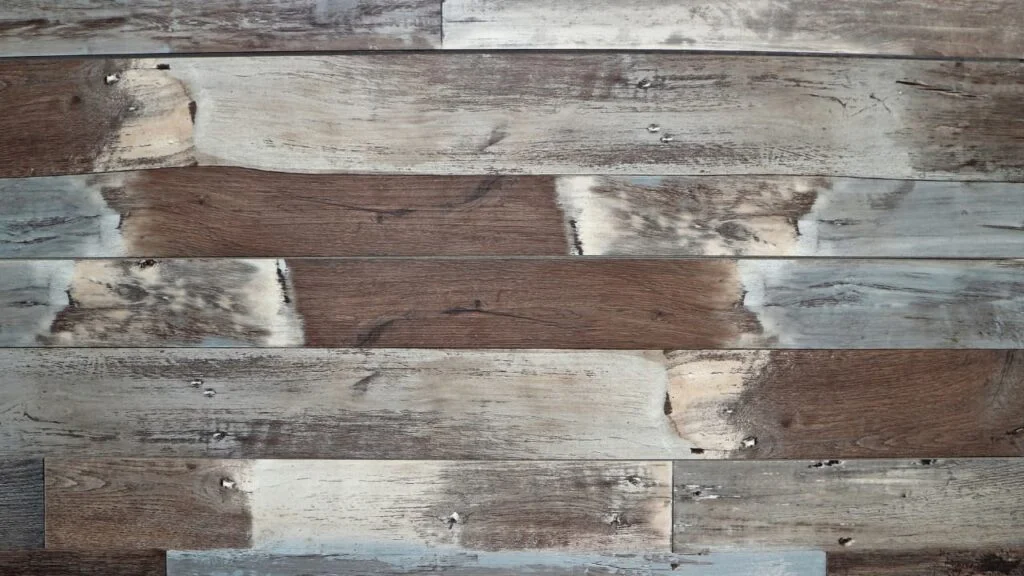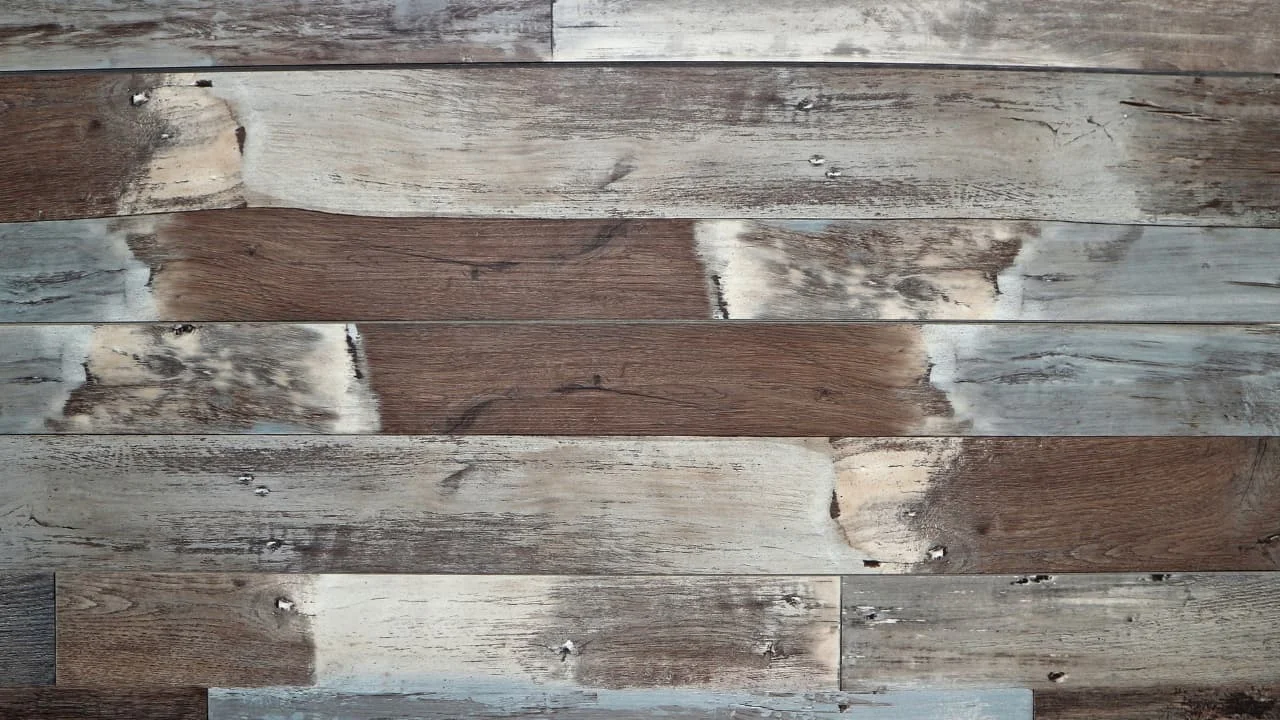Laminate furniture is a popular choice for many homeowners due to its affordability and versatility. But what happens when you’re tired of the look or color? Can you paint laminate surfaces, or are you stuck with the original finish? The answer might surprise you! In this blog post, we’ll explore everything there is to know about painting laminate–from understanding the material itself to preparing your surface and choosing the right paint.
Plus, we’ll share some expert tips on how to achieve a flawless result that will breathe new life into your furnishings.
Key Takeaways 💭
- Laminate furniture can be painted, but proper surface preparation is crucial for optimal adhesion.
- Choosing the appropriate type of paint and tools is important for long-lasting results on laminate surfaces.
- Light Sanding and priming techniques are necessary to ensure a smooth and durable finish when painting laminate surfaces.
- While painted laminate may not have the natural beauty of solid wood or quality veneers, it can offer cost-effective customization options without needing expensive replacements.

Table of Contents
Understanding Laminate Surfaces
Laminate is a type of nonporous material made from wood particles, fibers, and resin that are fused together under high pressure and heat.
What Is Laminate?
Laminate is a popular and budget-friendly material commonly used in the production of furniture, flooring, countertops, and cabinetry. It is created by fusing multiple layers of synthetic materials together under high pressure – typically consisting of a resin-treated fiberboard core with a decorative layer adhered on top and finished off with a clear protective coating.
Due to its affordability, durability, and versatility, laminate has become incredibly popular among homeowners looking for cost-effective solutions that don’t compromise on style.
Additionally, this non-porous material is resistant to staining and easy to clean – making it ideal for kitchen cabinets, coffee tables, and countertops prone to spills.
Pros And Cons Of Using Laminate
Laminate is a type of nonporous material made from wood chips, resin, and paper pressed together under high heat and pressure. It’s commonly used as an alternative to expensive hardwood or stone surfaces due to its affordability and durability.
One of the pros of using laminate is that it’s relatively cheap compared to other wood alternatives, making it a popular choice for low-cost furniture and cabinet refinishing projects.
Additionally, wood veneer furniture laminate surfaces are resistant to scratches, moisture, and stains which makes them easy to clean and maintain. However, one of the cons of using laminate is that while it looks similar to real wood grain or stone surfaces, it doesn’t have the same natural beauty or texture.
Can You Paint Laminate?
Yes, you can paint laminate! Learn how to properly prep the surface for interior paint and choose the right type of paint to achieve a successful and long-lasting finish in our step-by-step guide.
Prepping The Surface For Painting
Before painting your laminate surface, it’s crucial to prepare the surface properly for paint job. First and foremost, clean the surface thoroughly with soap and water or a TSP (trisodium phosphate) solution to remove any dirt, grease, or grime.
Next, sanding is essential to ensure adequate paint adhesion. Sand the entire surface gently using 120-grit sandpaper until you achieve a slightly roughened texture on top of the smooth finish.
After that, apply the primer evenly over the sanded surface to promote adhesion between paint and non-porous material like laminate surfaces.
Use a foam roller for better coverage without leaving brush marks behind.
Prepping your laminate furniture in this way will help ensure that you get long-lasting results when applying painted finishes while avoiding chipping or peeling prematurely down the line.
Types Of Paint Suitable For Laminate
When it comes to painting laminate surfaces, not all types of paint will adhere properly. In fact, using the wrong type of paint can result in chipping and peeling, which can ruin your furniture or flooring.
The best types of paints for laminates are those that have strong adhesion properties, as well as ones that dry quickly and harden into a durable finish.
Some examples include chalk paint, latex paint, enamel, and oil-based paints. Chalk paint is popular because it requires little to no surface preparation and doesn’t need primer; however, it may not be suitable for high-traffic areas.
Latex enamel offers great coverage and dries quickly but may require multiple coats for proper coverage. Oil-based paints provide excellent durability but are more difficult to clean up after use due to their solvents.
Advantages And Disadvantages Of Painting Laminate
Painting laminate furniture can be a cost-effective way to give it a new lease on life. However, there are both advantages and disadvantages to painting this type thin material of surface.
One advantage is that it allows you to customize your furniture or cabinets any way you like without having to replace them entirely.
On the other hand, there are also some drawbacks to painting over wood laminate furniture and surfaces. For example, paint may not adhere well if proper surface preparation isn’t done before applying paint.
Also, while painted laminate wood veneer may have an attractive finish, it won’t have the durability of solid wood furniture or quality veneers.
Steps To Paint Laminate Surfaces
To paint laminate furniture surfaces, you need to follow a few crucial steps such as sanding and priming the surface before applying the chosen paint. These techniques can ensure better adhesion and long-lasting results.
Sanding And Priming Techniques
Before painting any laminate surface, it’s essential to prepare the surface for paint application. Sanding is a crucial step in ensuring your new paint adheres well to the nonporous material of laminate.
Use fine-grit sandpaper to rough up the dirty surface of the topcoat and allow for better adhesion.
After sanding, it’s time to prime your laminate surfaces properly. Priming ensures that the paint sticks evenly to shiny surfaces, while also preventing stains from seeping through after painting.
Choose an appropriate primer specifically designed for non-porous materials like laminate furniture or flooring. Apply with even strokes using a brush or roller, allowing sufficient drying time before applying any paint coats on top of it.
Applying The Paint
After the surface has been adequately prepped, it’s time to start painting. When selecting paint for laminate surfaces, it’s important to choose one that will adhere well to glossy surface and create a smooth finish.
When applying the paint, be sure to use thin coats instead of piling on thick layers in an attempt to speed up the process. Scraping along with sandpaper is required between each coat of paint so as to promote better adhesion and level out any imperfection resulting from drips or bubbles.
Depending on how many layers you’ve applied, allow at least 24 hours before using or handling your freshly painted wood laminate or furniture piece after all’s done.
How Many Coats To Apply
When it comes to painting laminate surfaces, knowing how many coats of paint to apply can make a huge difference in the final results. Applying too few coats may leave an uneven and patchy finish while applying too many layers can result in clumps and drips.
As a general rule, two or three coats should be sufficient for most laminate projects.
It’s also important to allow each coat of paint ample time to dry before applying another layer. This will usually take several hours but ensure that you read and follow manufacturer instructions for your particular chosen product carefully.
Additionally, using high-quality paints with good adhesion properties can help achieve better coverage with fewer coats necessary.
Tips And Tricks For A Successful Laminate Painting Project
Choose the right tools and materials for your project, ensure proper ventilation to avoid health hazards, maintain and clean painted surfaces with care, avoid common mistakes by following expert advice, and make your laminate painting project a success.
Choosing The Right Tools And Materials
Selecting the appropriate tools and materials is vital when painting laminate surfaces to ensure a successful project. First, choose the right paint. It’s always best to opt for a primer specifically designed for nonporous surfaces like laminate, as it helps with adhesion.
Next up are the brushes or rollers used to apply the paint. Pick ones that don’t leave lint behind and give an even coat of paint. You might also require sandpaper grits (120-220) in case any sanding is necessary – especially if your surface has a varnished finish; mild soap or degreaser cleaner and cloths for cleaning purposes; drop cloths or newspapers to protect floors from accidental spills, and painter’s tape if necessary.
Proper Ventilation
Proper ventilation is essential when painting laminate surfaces. The fumes and chemicals from the paint can be harmful to breathe in, so it’s best to work in a well-ventilated area.
Ideally, you should open windows and doors or use a fan to increase airflow and reduce the concentration of fumes in the room. If possible, wear a mask respirator rated for organic vapors that covers both your nose and mouth.
It’s also important to avoid smoking or using any flames nearby while painting.
For example, if you’re painting laminate cabinets in your kitchen, make sure that the space is well-ventilated with plenty of fresh air circulating throughout so that you are not inhaling potentially hazardous chemicals as they dry out after application.
Maintenance And Cleaning
Maintaining and cleaning your painted laminate surfaces will help prolong their lifespan. For regular upkeep, simply wipe down the surface with a damp cloth or sponge to remove any dirt or debris.
Avoid using harsh chemicals or abrasive cleaning tools that may scratch the paint. If you need to deep clean, consider using a gentle soap solution and a soft-bristled brush.
If there are stubborn stains or marks that won’t come off with traditional cleaning methods, try using a magic eraser or rubbing alcohol on the affected area. Just be careful not to rub too hard as this can damage the paint finish.
Common Mistakes To Avoid
One of the biggest mistakes people make when painting laminate is not properly preparing the surface.
Another mistake is using the wrong type of paint. Latex or oil-based paints are generally not suitable for nonporous materials like laminate.
Lastly, not allowing enough time for each coat of paint to dry before applying another can also cause issues with adhesion and durability.
Conclusion
In conclusion, painting laminate surfaces can give your furniture or home improvement projects a fresh, new look without breaking the bank.
To ensure success, proper surface preparation is key, and using the right type of paint will help achieve optimal adhesion on challenging surfaces. Remember to choose the appropriate tools and materials for your project and follow our step-by-step guide for the best results.
FAQs:
Can laminate be painted?
Laminate can technically be painted, but it requires preparation and the right materials to ensure a long-lasting finish. Without proper prep work, paint is likely to peel off quickly from the surface.
What type of paint should I use for painting laminate surfaces?
To ensure success when painting laminate surfaces, you should opt for a high-quality primer followed by an oil-based paint meant for slick surfaces such as laminates or melamine.
How do I properly prepare a laminate surface before painting?
Properly preparing your surface will include cleaning it thoroughly with soap and water, sanding it down lightly to allow the new material to adhere better, and then wiping it clean again after the sanding has been completed.
Is professional help needed for painting my laminated furniture?
While professionals are always a great resource if you need assistance in getting started with your project or are unsure about what you’re doing along the way- DIY enthusiasts can easily tackle this task on their own given enough time & resources (quality paints, tools, etc). However – if you do end up experiencing unexpected issues such as chipping/paint fading early on then seeking out expert advice could help avoid frustrating redo’s down the road.

